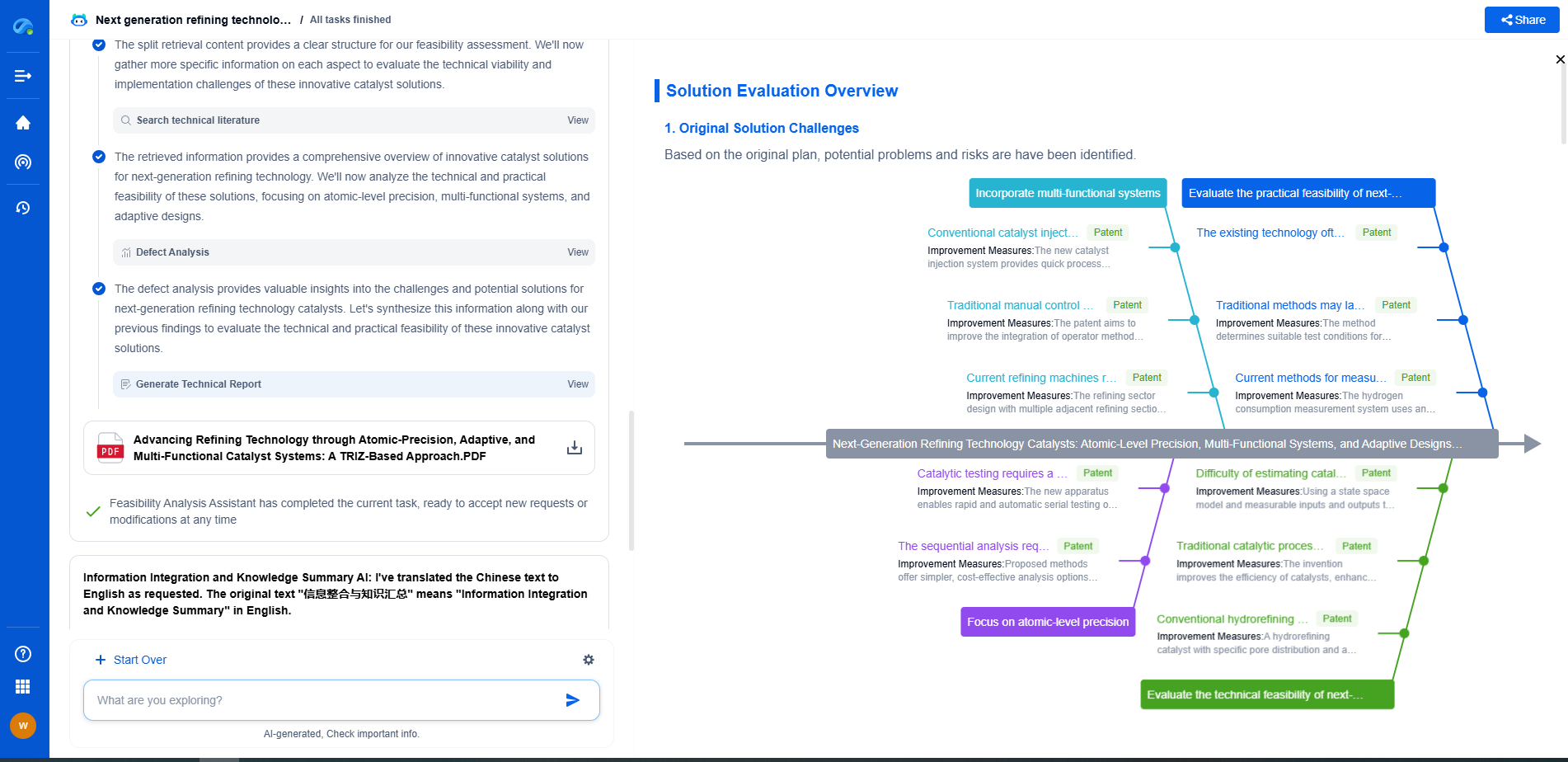Why Overloading a Robot Reduces Its Lifespan
JUN 26, 2025 |
In today's rapidly advancing technological landscape, robots are becoming increasingly integrated into both industrial and everyday environments. With their ability to perform repetitive tasks with precision and efficiency, robots have become invaluable assets across various sectors. However, just like any other machine, robots have their limits, and overloading them can significantly impact their functionality and lifespan. This blog explores the reasons why overloading a robot can reduce its lifespan and offers insights into how to avoid these detrimental effects.
Understanding Robot Capabilities
Before delving into the consequences of overloading, it's essential to understand the capabilities of a robot. Each robot is designed with specific parameters in mind, including load capacity, speed, and operational duration. These parameters depend on the robot's build, components, and intended use. Overstepping these limits not only reduces efficiency but can also cause irreversible damage to the robot's components, leading to a shorter lifespan and increased maintenance costs.
The Impact of Physical Overload
Physical overload occurs when a robot is tasked with handling more weight or force than it is designed to manage. This strain can cause wear and tear on mechanical components such as gears, motors, and joints. Over time, this excessive stress can lead to mechanical failures, breakdowns, and even permanent damage. For instance, a robot arm lifting weights beyond its capacity may experience joint wear or motor burnout, resulting in costly repairs or replacement.
Electrical and Thermal Stress
Overloading doesn't only affect the mechanical components; it also impacts the robot's electrical systems. Excessive loads or prolonged usage can cause overheating, as the electrical systems struggle to manage the increased demand. This thermal stress not only degrades electrical components but also poses a risk of fires or short circuits. The heat generated from overworking can lead to insulation breakdown, affecting the robot's ability to function correctly and safely.
Software Challenges and Overload
Modern robots rely heavily on software for operations, control, and communication. When a robot is overloaded, it isn't just the physical components that struggle; the software systems also face challenges. Overloading can lead to processing delays, software crashes, and system errors. These issues compromise the robot's efficiency and reliability, potentially leading to downtime and further damage if not addressed promptly.
Preventive Measures to Avoid Overloading
To ensure the longevity and optimal functioning of robots, several preventive measures can be implemented. First and foremost, it's crucial to adhere to the manufacturer's guidelines regarding load capacity and operational limits. Regular maintenance checks should be conducted to identify any signs of wear and tear early on, allowing for timely repairs and adjustments.
Moreover, implementing advanced monitoring systems can help detect signs of overload in real-time. These systems can alert operators to potential issues, enabling them to take corrective actions before significant damage occurs. Training for operators is also essential, ensuring they understand the importance of staying within operational limits and recognize the early warning signs of overload.
Conclusion
In conclusion, while robots are designed to enhance efficiency and productivity, they are not immune to damage from overloading. Understanding and respecting their limits is vital to preserving their lifespan and ensuring consistent, reliable performance. By taking preventive measures and investing in regular maintenance, businesses and individuals can protect their investments and continue to benefit from the capabilities of their robotic systems for years to come.
Ready to Redefine Your Robotics R&D Workflow?
Whether you're designing next-generation robotic arms, optimizing manipulator kinematics, or mining patent data for innovation insights, Patsnap Eureka, our cutting-edge AI assistant, is built for R&D and IP professionals in high-tech industries, is built to accelerate every step of your journey.
No more getting buried in thousands of documents or wasting time on repetitive technical analysis. Our AI Agent helps R&D and IP teams in high-tech enterprises save hundreds of hours, reduce risk of oversight, and move from concept to prototype faster than ever before.
👉 Experience how AI can revolutionize your robotics innovation cycle. Explore Patsnap Eureka today and see the difference.
- R&D
- Intellectual Property
- Life Sciences
- Materials
- Tech Scout
- Unparalleled Data Quality
- Higher Quality Content
- 60% Fewer Hallucinations
Browse by: Latest US Patents, China's latest patents, Technical Efficacy Thesaurus, Application Domain, Technology Topic, Popular Technical Reports.
© 2025 PatSnap. All rights reserved.Legal|Privacy policy|Modern Slavery Act Transparency Statement|Sitemap|About US| Contact US: help@patsnap.com

